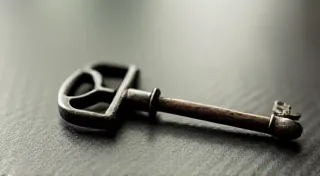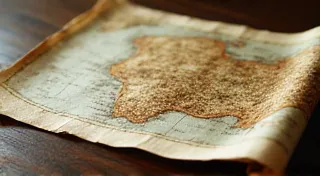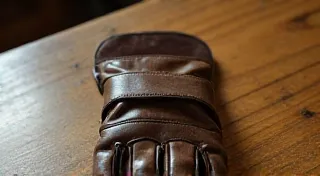The Echo of a Sentence: How Nib Size Influences Sentence Structure
There's a certain poetry to the past, an inherent beauty in objects that have witnessed time unfold. Antique accordions, with their bellows whispering forgotten melodies, come to mind – the scent of aged wood and felt, the subtle resistance of the keys, the resonant hum of forgotten songs. The same feeling washes over me when I handle a vintage fountain pen nib. It’s not just a piece of metal; it's a portal to another era, a tangible link to the hands that crafted it, and, profoundly, to the minds that used it to put thoughts to paper. We often discuss the aesthetic beauty of vintage pens, the allure of celluloid, the elegance of a lever filler. But what about the nib? It's the soul of the pen, the heart of the writing experience, and its size, unexpectedly, has a profound influence on the very sentences we construct.
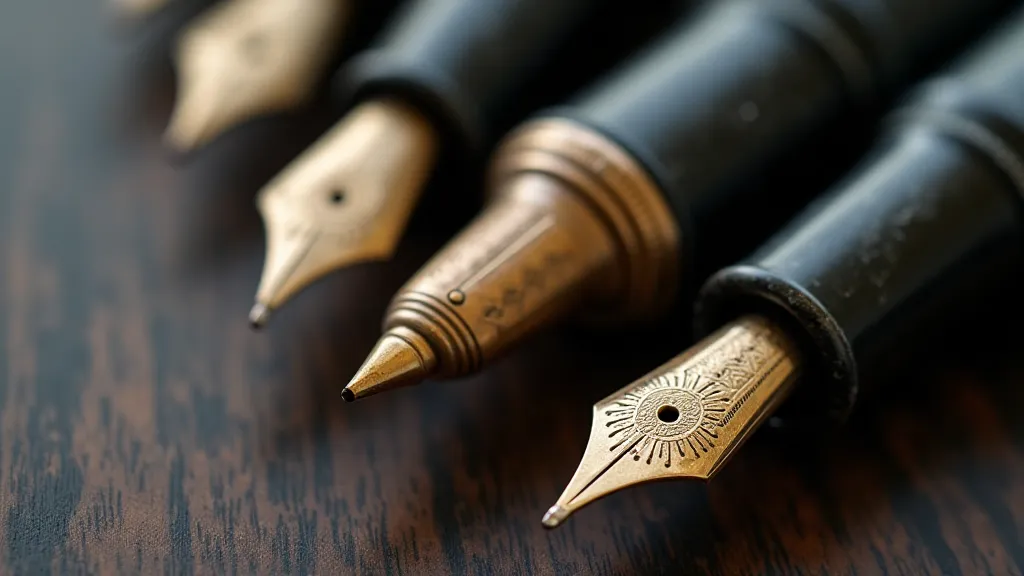
The Craftsmanship & The Context
Let's consider the era in which many of these nibs were produced. The late 19th and early 20th centuries were a time of meticulous craftsmanship. Nib makers weren’t churning out mass-produced commodities; they were artisans, often taking immense pride in the flexibility and responsiveness of their creations. The gold content, the shape of the slit, the grinding – all were carefully considered. Imagine a clerk meticulously recording ledger entries, or a novelist hunched over a manuscript, each stroke of the pen leaving a permanent mark on the page. These weren’t writers who often contemplated a ‘style’ in the modern sense. They simply wrote, and the tools – including the nib – shaped their expression in subtle but significant ways. This connection between the tool and the thought process is something I explore further in The Scribe's Secret Garden: Finding Resonance Between Tool and Thought.
Early nibs were frequently larger, wider, and more flexible than those produced later. Think of a broad italic nib, ideal for creating striking headlines or ornate calligraphy. These nibs weren’t simply about aesthetics; they were often the norm, suited to the writing surfaces and inks of the time. Paper was coarser, less absorbent, and inks often contained more particulate matter. A finer nib would have clogged easily, or produced a scratchy, unpleasant line. The broader nib could handle the imperfections and still lay down a legible, expressive mark. The act of transforming intention into ink through these antique tools is truly remarkable, an alchemic process described in detail in The Alchemy of Line: How Vintage Nibs Transform Intention into Ink.
The Influence of Size: Breadth & Flow
The fascinating thing is how a larger nib can subtly encourage longer, more flowing sentences. The ease with which ink flows from a broad nib allows for a certain looseness in writing. It's almost as if the pen itself encourages you to let the thoughts tumble out, unburdened by the constraints of brevity. The writer doesn't have to fight the tool; the tool works *with* them. There’s a feeling of effortless prose, a sense of being carried along by the flow of ink. Conversely, a smaller nib – a fine italic, or an extra-fine – demands a different approach. The reduced flow requires greater control. Every stroke is more deliberate, more conscious. This, surprisingly, tends to encourage shorter, more concise sentences. There’s less room for meandering thoughts, for sprawling clauses. You're forced to distill your ideas into their essence.
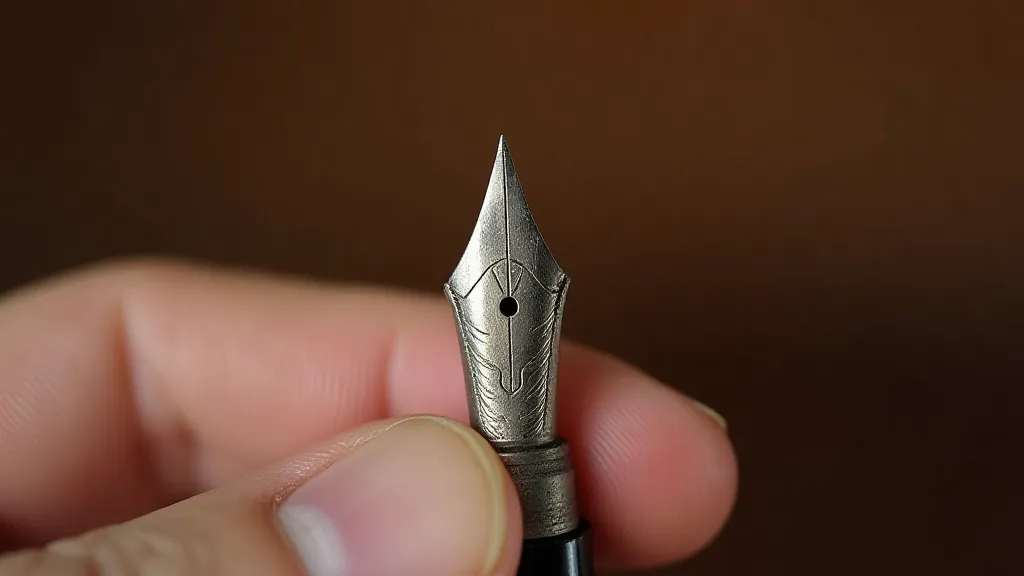
A Personal Reflection: The Transition & Beyond the Aesthetics
I recall a period when I exclusively used broad nibs. My writing felt languid, almost romantic. I wrote long, descriptive passages, reveling in the flow of words. I wasn’t consciously thinking about sentence structure, but I became acutely aware of the impact the nib was having on my style. It was as if the pen was whispering, “Expand, elaborate, linger.” The echoes of those past writing experiences, captured in the metal of the nib, are captivating.
Then, I began experimenting with finer nibs. Suddenly, my writing shifted. Sentences became tighter, more direct. Paragraphs felt more focused. It wasn't a matter of *wanting* to write differently; the nib subtly guided me. It was a powerful lesson in the symbiotic relationship between writer and tool. It made me appreciate how much of our writing style is, in truth, a product of the implements we choose. This symbiotic relationship extends beyond just nib size, encompassing the historical context and craftsmanship inherent in these artifacts. Each nib carries within it a story, a silent testament to the hands that shaped it and the minds that wielded it. These stories resonate deeply, contributing to the enduring appeal of vintage pens and the profound connection they offer to the past.
The study of vintage nibs is not just about appreciating their aesthetics; it's about understanding the cultural and historical context in which they were created and used. It's about recognizing the subtle but significant influence these tools had on the writing practices of previous generations. It’s a way of connecting with the past, of experiencing the writing process through the lens of history.
Restoration & Collecting: Understanding the Legacy & The Stories They Tell
For those interested in collecting vintage nibs, understanding this interplay between size and sentence structure can add another layer of appreciation. It’s not just about owning a beautiful piece of metal; it’s about possessing a piece of writing history. Recognizing the nuances of different sizes – the broad italics, the flexible obliques, the fine stubs – allows you to connect with the writing practices of previous generations. The stories these nibs tell are fascinating, spanning centuries of craftsmanship and cultural expression.
Restoration can also be revealing. A nib that has been damaged or improperly ground can significantly alter its writing characteristics. Sometimes, a simple realignment of the tines can dramatically impact the flow of ink and the overall feel of the writing experience. The process of understanding and restoring a vintage nib is akin to deciphering a historical document; you’re uncovering the story of its past, revealing the intended purpose and character of the writing tool. This careful examination of each nib illuminates not only its physical characteristics but also the intangible qualities that make it unique – its personality, its history, its connection to the past.
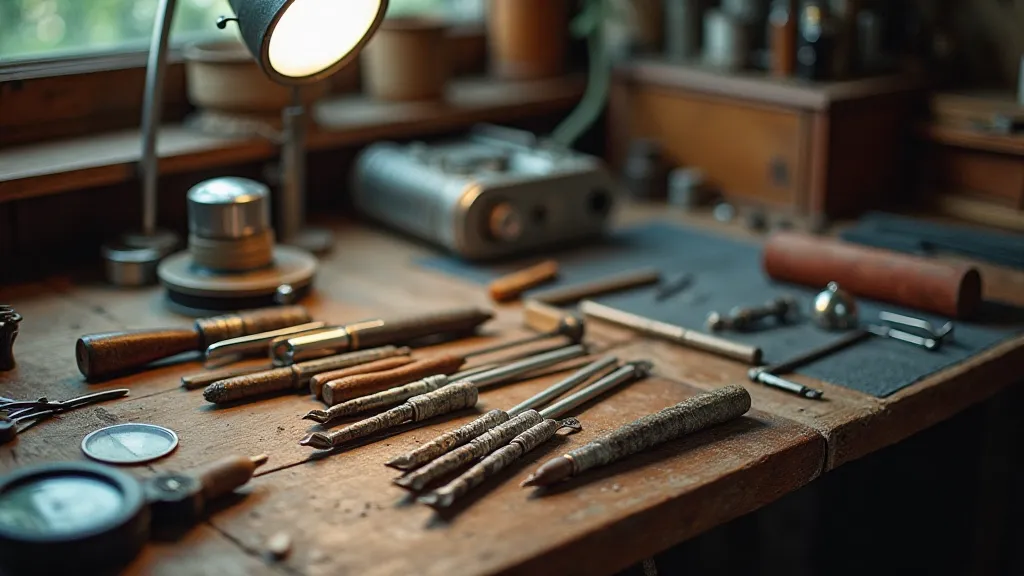
Beyond the Metal: A Connection to the Past & The Value of Preservation
The echo of a sentence isn't just about the words themselves; it's about the tools that brought those words to life. The size of a vintage fountain pen nib, seemingly a minor detail, reveals a profound truth: that our writing isn't just a product of our minds, but also a dialogue with the tools we use. The next time you hold a vintage pen, take a moment to consider the nib. Think about the hands that crafted it, the minds that wielded it, and the sentences it helped to shape. You might just discover a deeper appreciation for the beauty and history contained within that small piece of metal – and a newfound understanding of how even the smallest details can influence the flow of creativity.
Preserving these artifacts is more than just maintaining physical objects; it’s safeguarding a crucial link to our cultural heritage. It's about ensuring that future generations can continue to experience the unique connection to the past that these writing tools offer. These tangible connections resonate with something deep within us, reminding us of the enduring power of human creativity and the enduring beauty of craftsmanship.
Ultimately, the study and appreciation of vintage fountain pen nibs is a journey of discovery—a journey into the heart of writing itself, a journey through the corridors of history, and a celebration of the artistry and ingenuity that have shaped our world.
